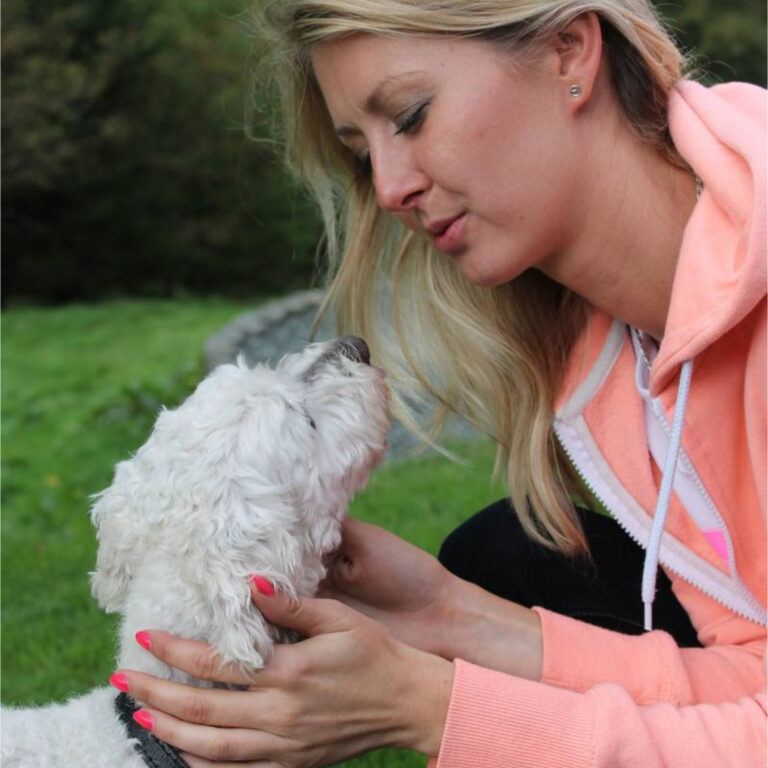Creating Peaceful Paws: A Guide to Resolving Pet Territory Disputes
Creating Peaceful Paws: A Guide to Resolving Pet Territory Disputes
Learn how to handle territory disputes between pets and create a harmonious multi-pet household environment with effective strategies and insights from animal societies, including the specialized training programs offered by Dayton Off Leash K9 Dog Training.

Introduction to Handling Pet Territory Disputes
Navigating pet territory disputes demands a nuanced understanding of animal behavior and a commitment to fostering a serene living environment for all household members, both human and animal. These disputes often stem from a pet’s instinctual drive to establish dominion over certain spaces, resources, or the affection of their human counterparts, leading to an array of stress-induced behaviors.
Such conflicts not only disrupt the tranquility of the home but can escalate to anxiety and physical confrontations among pets, posing a risk to their health and safety. The essence of effectively managing these disputes lies in preemptive actions and strategies aimed at mitigating the underlying causes of territorial aggression. By adopting a proactive approach, pet owners can cultivate a setting where mutual respect and understanding prevail, thereby ensuring the enduring health and happiness of their furry family members. The journey towards resolving pet territory disputes is pivotal, as it not only restores peace but also strengthens the bond between pets and their owners, underscoring the importance of harmony in a multi-pet household.
Signs of Territory Disputes Among Pets
Territorial disputes between pets can surface through a variety of behaviors that signal discomfort or aggression towards others sharing their environment. Commonly, pets like dogs and cats may resort to excessive barking , growling, or hissing as initial manifestations of territorial disputes. These vocal expressions serve as a warning to perceived intruders and are often the pet’s first line of defense to assert dominance over their territory. For instance, a normally calm dog might suddenly start barking incessantly at a new cat in the house, indicating its discomfort and claim over the space. Such behaviors, if not managed timely, can escalate, leading to more severe confrontations.
Moreover, body language plays a critical role in signaling territorial disputes among pets. Signs to watch for include raised fur, a tense posture, and direct staring, which are indicative of a pet’s readiness to defend its territory. These non-verbal cues are crucial for pet owners to recognize early on to prevent potential conflicts.
Additionally, sudden behavioral changes such as unexpected aggression towards fellow pets or withdrawal and isolation can be indicative of stress related to territorial disputes. For example, a cat that previously enjoyed lounging in the living room but now hides in the bedroom might be feeling threatened by another pet. Recognizing these signs is the first step towards addressing and resolving territorial disputes, ensuring a peaceful cohabitation among pets.
Causes of Territorial Behavior in Pets
Understanding the root causes of territorial behavior in pets is crucial for addressing and managing these issues effectively. One significant factor is the lack of early socialization during the critical developmental stages of kittens and puppies. This early period is essential for exposing pets to a variety of animals and environments, shaping their ability to adapt and coexist peacefully with other pets as they grow older. Without this exposure, pets may not learn how to share their space and resources, leading to territorial behavior as they become overly protective of their environment and belongings.
Moreover, territorial behavior often arises when pets perceive a threat to their resources or personal space, particularly in multi-pet households where they must compete for food, toys, and their owner’s attention. For example, a dog might become aggressive towards a new puppy in the house, seeing it as a rival for affection and resources. Additionally, significant changes in household dynamics, such as relocating to a new home or the introduction of a new pet, can exacerbate territorial instincts.
A cat, for example, may respond to these changes by marking its territory more frequently, using urine spraying as a means to assert control over the unfamiliar environment and signal its presence to other pets. Recognizing these triggers is the first step towards mitigating territorial disputes and fostering a more harmonious living situation for all pets involved.
Strategies for Effectively Managing Pet Territory Conflicts
Effectively managing pet territory conflicts requires a nuanced approach that addresses both the immediate issue and its underlying causes. The introduction of a new pet into a home can be a significant source of stress for existing pets, potentially leading to territorial disputes. To mitigate this, a gradual and controlled introduction process is paramount. This involves keeping the new pet in a separate area at first, and then slowly allowing supervised interactions in neutral territory. This step-by-step approach allows pets to become accustomed to each other’s presence and scent without the direct threat of confrontation, reducing the likelihood of territorial aggression.
In addition to a careful introduction process, employing positive reinforcement techniques plays a crucial role in fostering harmonious relationships between pets. Rewarding pets for calm and non-aggressive behavior towards each other encourages positive interactions, helping to establish a peaceful coexistence. This can include treats, praise, or playtime when pets interact peacefully.
Moreover, providing environmental enrichment is essential for reducing territorial stress. This can be achieved by ensuring there are ample resources (such as food, water bowls, and toys) available in multiple locations to prevent competition. For cats, vertical spaces like cat trees can offer safe havens, while dogs may benefit from designated resting areas or beds that they don’t have to share. Such strategies not only alleviate immediate tensions but also contribute to a more secure and stress-free environment for all pets involved.
Incorporating professional training programs, such as those offered by Dayton Off Leash K9 Dog Training, can further enhance these strategies by providing tailored solutions for behavior modification. Their expertise in addressing territorial behavior through specialized training methods can be invaluable in achieving long-lasting harmony in multi-pet households. By fostering positive relationships and understanding between pets and their owners, Dayton Off Leash K9 Dog Training ensures a peaceful coexistence in shared territories. For pet owners seeking to resolve pet territory disputes effectively, exploring the specialized training programs available at Dayton Off Leash K9 Dog Training offers a promising avenue towards achieving a harmonious living environment for all pets.
Introducing Pets to Shared Territory
Introducing pets to a shared territory is a delicate process that requires a thoughtful and systematic approach to minimize stress and prevent conflicts. One effective strategy is the use of scent swapping techniques. By exchanging bedding, toys, or even cloths that each pet has slept on, owners can help pets become accustomed to each other’s scent in a non-threatening way. This technique plays a crucial role in easing the tension that might arise during the first face-to-face meeting. The scent of a new pet becomes familiar, thereby reducing the likelihood of aggressive responses when they eventually share the same physical space.
As pets begin to show signs of acceptance towards each other’s scent, the next step involves gradually expanding their shared territory. This can start with supervised, short-duration encounters in neutral areas to prevent any pet from feeling territorial. Positive reinforcement should be employed to reward calm and non-aggressive behavior, reinforcing the idea that peaceful coexistence is both possible and rewarding.
However, it’s important to recognize that not all pets adjust at the same pace. In instances where disputes continue or escalate, seeking the expertise of a professional animal behaviorist can provide tailored strategies that address the unique personalities and needs of each pet. Dayton Off Leash K9 Dog Training offers specialized programs that focus on creating harmonious pet relationships, emphasizing the importance of a peaceful introduction to shared territories. For expert guidance and personalized training methods that cater to resolving pet territory disputes, visit Dayton Off Leash K9 Dog Training for more details.

Insights from Animal Societies on Conflict Resolution
Exploring the conflict resolution strategies employed by animal societies can offer a fresh perspective on managing pet territory disputes within our homes. Dolphins, for instance, utilize a complex system of vocalizations and coordinated movements to address and resolve conflicts within their groups. This method of using communication to maintain social harmony underscores the significance of understanding and addressing the root causes of disputes rather than merely reacting to the symptoms. By applying this principle, pet owners can work towards creating a more peaceful and cohesive environment for their pets, emphasizing the need for clear signaling and mutual respect among animals.
Similarly, the honey bees’ approach to conflict resolution through the use of pheromones to communicate and maintain order is another fascinating example. This strategy demonstrates how non-verbal cues can play a crucial role in managing social dynamics and preventing conflicts. In the context of household pets, this translates to the importance of monitoring body language, recognizing stress signals, and providing ample space for each pet to express themselves safely.
By paying attention to these subtle cues and fostering an environment where pets can coexist without feeling threatened, pet owners can significantly reduce the likelihood of territorial disputes. Additionally, consulting with professionals like Dayton Off Leash K9 Dog Training can provide tailored strategies to further enhance communication and understanding between pets, leading to a more harmonious household. Visit https://daytonohiooffleashdogtrainers.com/ for more details on how to apply these insights to your pet training regimen.

Incorporating Dayton Off Leash K9 Dog Training into Your Strategy
In the quest for a peaceful coexistence among pets in the same household, Dayton Off Leash K9 Dog Training emerges as a beacon of hope for pet owners grappling with territorial disputes. This renowned training facility is distinguished by its commitment to addressing territorial behavior through meticulously tailored training protocols.
Their approach is grounded in the principle of nurturing positive relationships between pets and their owners, which is pivotal for fostering a serene atmosphere in shared territories. The effectiveness of their training methods is evidenced by a consistent track record of successful behavior modification, making Dayton Off Leash K9 Dog Training a sought-after solution for resolving pet territory conflicts and enhancing overall pet demeanor.
The specialized programs offered by Dayton Off Leash K9 Dog Training are designed not only to mitigate current territorial disputes but also to prevent future occurrences by instilling harmonious behaviors and reinforcing the bonds between pets and their owners. These programs stand out for their adaptability to the unique needs of each pet and situation, ensuring that every pet receives the most suitable and effective training.
Whether it’s a dog that aggressively guards its food bowl or a cat that marks every corner of the house, Dayton Off Leash K9 Dog Training has the expertise to address these challenges head-on. By choosing to engage with their specialized training programs and consultations, pet owners take a significant step towards cultivating a harmonious living environment, free from the stress and anxiety that territorial disputes can cause. For more information on how Dayton Off Leash K9 Dog Training can assist in transforming your multi-pet household into a peaceful sanctuary, visit https://daytonohiooffleashdogtrainers.com/ [customerproductcontext].

Conclusion: Promoting Harmony in Your Multi-Pet Household
Creating a serene and harmonious environment within a multi-pet household requires a thoughtful and informed approach to handling pet territory disputes. Recognizing the early signs of territorial behavior, such as excessive barking or hissing, and understanding their root causes, such as lack of socialization or changes in the home environment, are crucial first steps.
By employing effective conflict management strategies, including gradual introductions, positive reinforcement, and environmental enrichment, pet owners can foster peaceful coexistence among their pets. It’s important to remember that the emotional well-being and overall happiness of each pet are deeply intertwined with how effectively their humans can navigate and resolve issues of territorial aggression.
In instances where territorial disputes persist or escalate, seeking the guidance of professionals, such as those at Dayton Off Leash K9 Dog Training, can make a significant difference. These experts can offer personalized training sessions and behavior modification programs tailored to the specific needs of your pets and your household. Their approach not only addresses the immediate issues at hand but also equips pet owners with the knowledge and skills to prevent future conflicts, promoting a lasting peace within the multi-pet home.
For those looking to take a proactive step towards resolving pet territory disputes and improving the quality of life for all their furry family members, exploring the specialized training programs and consultations offered by Dayton Off Leash K9 Dog Training is an excellent place to start. Visit their website at https://daytonohiooffleashdogtrainers.com/ for more information on how they can assist in promoting harmony in your multi-pet household.
Would you like a certified trainer to contact you?








